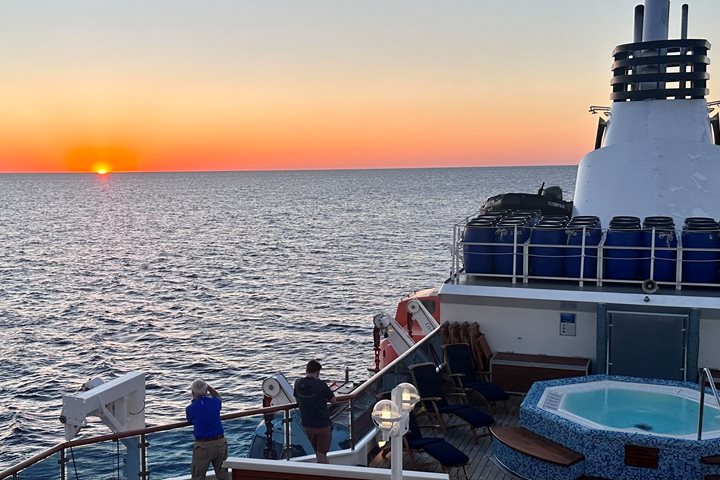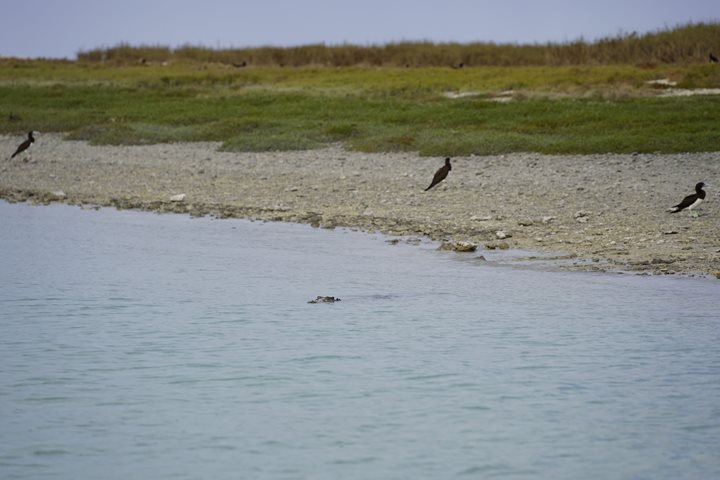Bookended by a riot of oranges and reds that would make a heating coil jealous, our day at sea towards the Kimberley was one of preparation and anticipation.
At 6:37 a.m., as predicted, a blazing red sun emerged beyond a distant row of cumulus clouds on the eastern horizon. Rimmed with a thin line of golden light, the horizon transitioned from a subtle pre-dawn hue to an explosion of light, color, and shape deserving of a symphonic soundtrack. As the morning crescendo diminished to the steady glow of daylight our day of preparation began. With a full schedule of lectures covering everything from the human history of the Kimberley to its marine biology, there was plenty of information to help prepare us for our adventures tomorrow.
Out on deck, a warm breeze and calm seas invited us to linger. To the impatient eye the Timor Sea offered a blank slate over which we transited south/south east throughout the day. But, to those willing to search for a moment, tiny slivers of life began to emerge. In particular, flying fish. Without warning, and only for a matter of seconds, 20-centimeter-long gliders would spring from the bow wake of the National Geographic Orion and soar mere millimeters over the water’s surface after a burst from their powerful tails and then splash back into the sea as abruptly as they emerged. Time and time again, each as unannounced as the last, these frightened fighter jets would soar for their lives as we continued to plow south. Many a missed photo was taken as failed attempt followed failed attempt to capture these elegant yet evasive marine aviators.
With relaxation and preparation covered for the day, our anticipation grew. With our long awaited connection to the Kimberley region on the horizon, it was time for our captain to officially welcome us to the ship and usher us ahead with a toast to the Orion, her officers, and the adventures that await us in the days to come.







